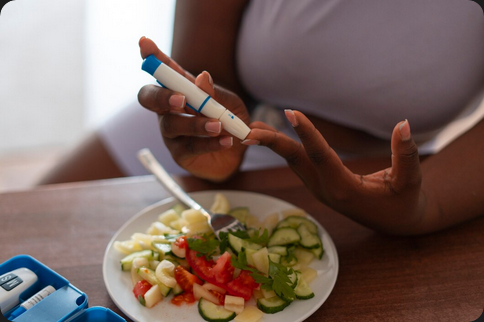How to Manage Type 2 Diabetes with Simple Lifestyle Changes
Hey there, friend! If you or someone you love has been diagnosed with type 2 diabetes, you might be feeling a mix of emotions—maybe a bit overwhelmed or unsure where to start. The good news? You don’t need to overhaul your entire life to manage this condition. With some simple, sustainable lifestyle changes, you can take control of your health, keep your blood sugar in check, and feel more energized. I’m not a doctor, but I’ve learned a thing or two about how small tweaks can make a big difference. Let’s dive into some practical ways to manage type 2 diabetes, one step at a time!
Understanding Type 2 Diabetes
First, let’s break down what type 2 diabetes is all about. In a nutshell, it’s when your body either doesn’t produce enough insulin or can’t use it effectively, leading to high blood sugar levels. Over time, this can cause complications, but lifestyle changes can help you manage it and even improve your quality of life. Think of it like tuning up a car—small adjustments can keep the engine running smoothly. Ready to get started? Here’s how you can make a difference with everyday habits.
Eat Smarter, Not Harder
Food is a huge part of managing type 2 diabetes, but you don’t need to swear off everything you love. It’s about making smarter choices that keep your blood sugar steady and your taste buds happy.
Focus on Balanced Meals
Aim for meals that combine lean proteins, healthy fats, and complex carbs. For example, swap white bread for whole-grain options like quinoa or brown rice, which release sugar more slowly. Add veggies like broccoli or spinach for fiber, and include proteins like chicken, fish, or beans to stay full longer. I love throwing together a colorful salad with grilled chicken—it’s easy, tasty, and diabetes-friendly.
Watch Portion Sizes and Timing
Portion control is key. Eating smaller, more frequent meals can prevent blood sugar spikes. Try using a smaller plate to trick your brain into feeling satisfied with less. Also, spacing out meals every three to four hours helps your body process sugar better. A handy tip? Keep a food journal for a week to spot patterns and make adjustments.
Get Moving to Boost Your Health

Exercise isn’t just about hitting the gym; it’s about moving your body in ways that feel go*-d. Physical activity helps your body use insulin more effectively, which is a win for managing type 2 diabetes.
Find Activities You Enjoy
You don’t need to run a marathon! Start with something fun, like a daily 20-minute walk, dancing to your favorite tunes, or even gardening. I’ve got a friend who swears by her evening bike rides—it’s her “me time” and great for her blood sugar. Aim for at least 150 minutes of moderate activity per week, spread out however works for you.
Add Strength Training
Lifting light weights or doing bodyweight exercises like squats can build muscle, which helps your body regulate blood sugar. Try two sessions a week, even just 10 minutes of push-ups or resistance band exercises. It’s amazing how much stronger you’ll feel!
Prioritize Sleep for Better Blood Sugar Control
Believe it or not, sleep plays a big role in managing type 2 diabetes. Skimping on rest can mess with your hormones and make it harder to control blood sugar.
Create a Sleep-Friendly Routine
Aim for seven to eight hours of quality sleep each night. Set a consistent bedtime, avoid screens an hour before bed, and keep your bedroom cool and dark. I’ve found that a cup of chamomile tea and a good book help me wind down. Good sleep keeps your stress levels low and your insulin sensitivity high.
Address Stress for Better Rest
Stress can spike blood sugar, and it often messes with sleep. Try relaxation techniques like deep breathing or meditation for five minutes a day. Apps like Calm can guide you if you’re new to this. Less stress means better sleep and better diabetes management.
Stay Hydrated and Mind Your Drinks
What you drink matters just as much as what you eat. Sugary sodas and juices can send your blood sugar soaring, but water is your best friend.
Choose Water and Unsweetened Teas
Make water your go-to drink. If plain water feels boring, add a slice of lemon or cucumber for a little flair. Unsweetened herbal teas or sparkling water are great options too. I keep a water bottle on my desk as a reminder to sip throughout the day.
Limit Alcohol and Caffeine
Alcohol can mess with blood sugar, especially if you drink on an empty stomach. Stick to moderate amounts and always pair it with food. Caffeine, meanwhile, can affect insulin sensitivity for some people, so keep an eye on how coffee or energy drinks make you feel.
Monitor and Connect with Support

Managing type 2 diabetes is a journey, and you don’t have to go it alone. Regular check-ins and a support system can keep you on track.
Track Your Blood Sugar
Use a glucose meter to monitor your levels as recommended by your doctor. This helps you see how food, exercise, and sleep affect you. It’s like having a roadmap to guide your choices. Many apps can log your readings and make it easier to spot trends.
Lean on Your Community
Talk to friends, family, or a diabetes support group about your journey. Sharing tips or even just venting can lift your spirits. Online forums or local groups can connect you with others who get it. My cousin joined a diabetes walking group, and she says the camaraderie keeps her motivated.
Work Closely with Your Healthcare Team
While lifestyle changes are powerful, they work best alongside professional guidance. Regular check-ups with your doctor or a diabetes educator can fine-tune your plan.
Follow Your Treatment Plan
If your doctor prescribes medication or insulin, take it as directed. Combine this with lifestyle changes for the best results. Ask questions if you’re unsure—your healthcare team is there to help.
Stay Educated
Keep learning about type 2 diabetes through reliable sources like the American Diabetes Association. Knowledge is power, and staying informed helps you make confident choices.
Wrapping It Up: Small Steps, Big Impact
Managing type 2 diabetes doesn’t have to feel like a full-time job. By making simple changes—like eating balanced meals, moving more, sleeping well, and staying connected—you can take charge of your health and feel great doing it. Start with one or two tips that resonate with you and build from there. You’ve got this, and every small step is a victory. Here’s to living well with type 2 diabetes!

